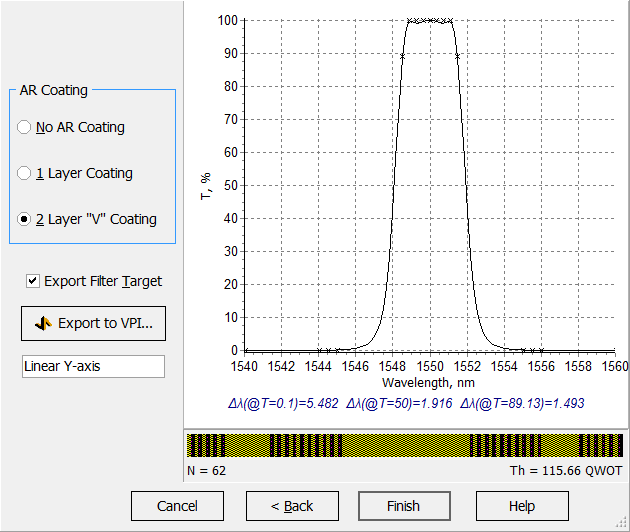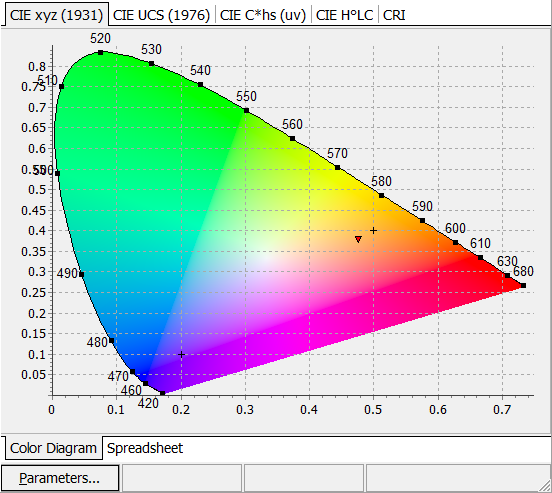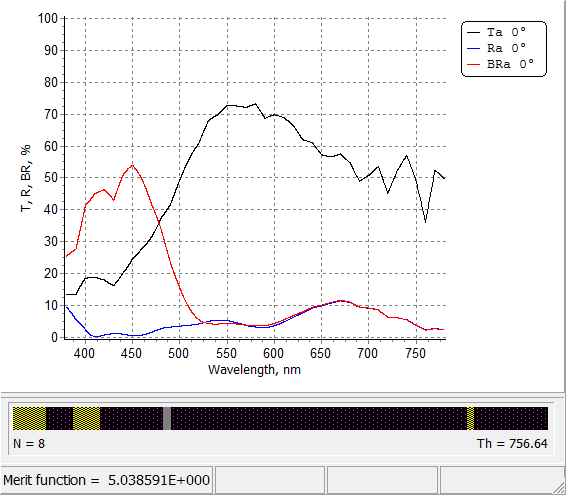| Optimization procedures provided by OptiLayer enable a wide range of synthesis strategies for solving complicated design problems. Accumulating experience with the program will allow you to devise your own strategies.
Gradual Evolution (advanced mode) extends the potentialities of the needle optimization technique in finding the design that is the most manufacturable. This mode enables generating a set of designs with various combinations of such major parameters as merit function value, number of design layers, total design thickness. This option helps you to synthesize metal-dielectric coatings. |
 |
 |
Along with the variety of options based on the needle optimization technique, OptiLayer has also other non-local design techniques: Inhomogeneous Refinement and Random Optimization.
These techniques turn to be quite useful for solving specific modern design problems, for example, for designing gain flattening filters. OptiLayer allows one to design coatings with specified color properties.
|
| Extremely efficient automatic design technique has been developed specifically for the design of WDM filters. As almost all other design options of OptiLayer, the WDM option is based on the unique know-how that is inaccessible to other thin film programs.
Design targets can be specified either in Spectral or Angular modes. The second mode is useful when design targets are specified over an angular range.
|
 |
OptiLayer provides user-friendly interface and a variety of examples allowing even a beginner to effectively start to design and characterize optical coatings. Read more…
Comprehensive manual in PDF format and e-mail support help you at each step of your work with OptiLayer.
If you are already an experienced user, OptiLayer gives your almost unlimited opportunities in solving all problems arising in design-production chain. Visit our publications page.
Look our video examples at YouTube
OptiLayer videos are available here:
Overview of Design/Analysis options of OptiLayer and overview of Characterization/Reverse Engineering options.
The videos were presented at the joint Agilent/OptiLayer webinar.
